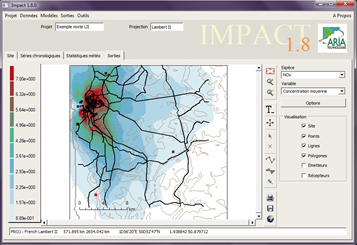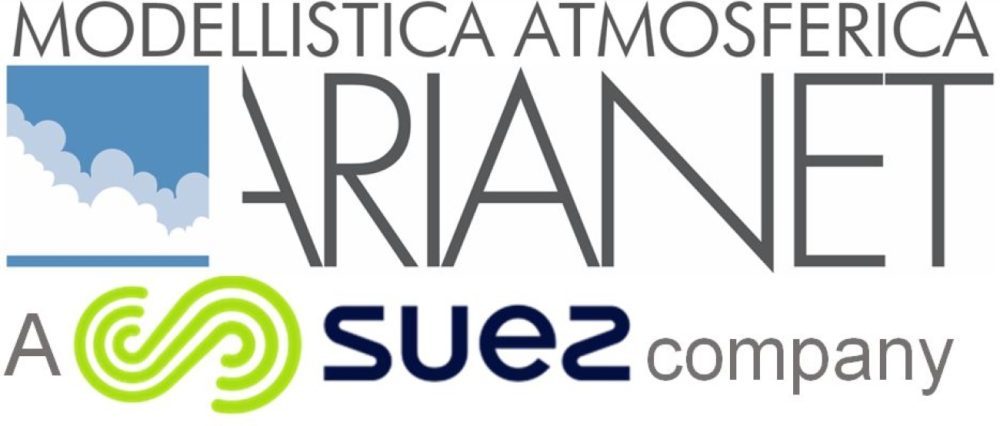User-friendly software, suitable for the operational needs of plant managers, design offices, and consulting firms.
It includes a straight-line stationary Gaussian dispersion model, a puff model for calm wind conditions, and AERMOD, a hybrid Gaussian model recommended by the US EPA. It is suitable for simulating the long-term dispersion of atmospheric pollutants (gaseous or particulate) from all types of emission sources (point, area, and line sources) and for calculating concentrations and deposition (dry and wet) expressed as annual averages or percentiles.


Spatial Scale: Domains ranging from 5 to 30 km in side length
Meteorological Input: Hourly or tri-hourly point measurements from standard meteorological stations.
Emission Input: Characteristics of each pollutant species (gases and particles). Emissions and geometry of each point source (industrial), linear source (roadways), area source (residential heating, diffuse VOC emissions, etc.), or volumetric source. Temporal variations on a monthly, weekly, and hourly basis for each source.
Meteorological Module: Vertical meteorological profiles, uniform across the horizontal computation domain, constructed from time-variant ground-level measurements. Estimation of atmospheric stability classes, mixing layer thickness, and similarity parameters required by AERMOD.
Dispersion Module:
- Industrial Plume Rise: Overestimation of industrial plumes.
- Simplified Terrain Treatment: Optional simplified handling of terrain.
- Sedimentation Velocity: For particulate matter.
- Heavy Gas Module: For heavier gases.
No complex chemical reactions are included.
